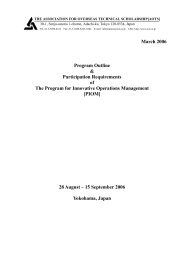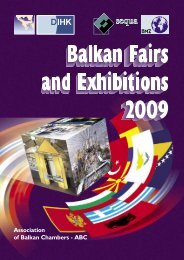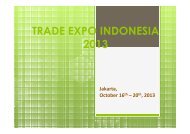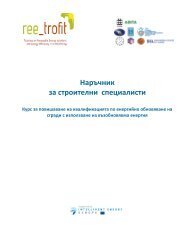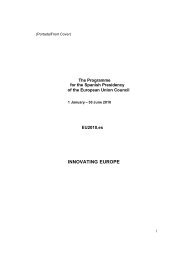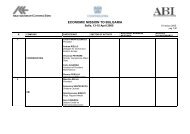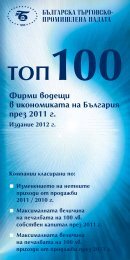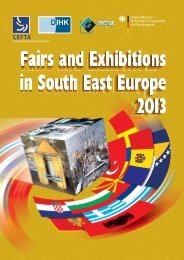Analysis of the Operation and Financial Condition of the Enterprise
Analysis of the Operation and Financial Condition of the Enterprise
Analysis of the Operation and Financial Condition of the Enterprise
You also want an ePaper? Increase the reach of your titles
YUMPU automatically turns print PDFs into web optimized ePapers that Google loves.
<strong>Analysis</strong> <strong>of</strong> <strong>the</strong> <strong>Operation</strong> <strong>and</strong> <strong>Financial</strong> <strong>Condition</strong> <strong>of</strong> <strong>the</strong> <strong>Enterprise</strong>Long-term investmentturnover ratio =Net turnoverLong-term investments(4.16.)A common feature <strong>of</strong> all long-term investments is such that <strong>the</strong>se investmentshave been made in cash.Low long-term investment turnover ratio means that <strong>the</strong>re is too much capitalinvested in long-term investments or that too much assets are invested compared to <strong>the</strong>amount <strong>and</strong> sales <strong>of</strong> goods produced. Therefore, in order to increase this level, it would benecessary to sell a share <strong>of</strong> fixed assets or else to lease it out thus gaining income thatcould be used more efficiently, for example, for payment <strong>of</strong> debts or expansion <strong>of</strong>business, or for ano<strong>the</strong>r purpose.Total asset turnover ratio demonstrates, how efficient is <strong>the</strong> use <strong>of</strong> assets forbuilding up <strong>of</strong> <strong>the</strong> net turnover, i.e., what is <strong>the</strong> number <strong>of</strong> full turnover cycles, whichcreates a sufficient effect in <strong>the</strong> form <strong>of</strong> pr<strong>of</strong>it or how many currency units were returnedper each asset currency unit invested in assets. This is estimated by dividing <strong>the</strong> netturnover with <strong>the</strong> total amount <strong>of</strong> assets:Total asset turnover ratio=Net turnoverTotal assets(4.17.)If this measure is too low, it would mean that <strong>the</strong> investment has been tooexcessive or that <strong>the</strong> scope <strong>of</strong> production has been reduced, or that <strong>the</strong> turnover hasdeclined.In order to increase this variable an enterprise would be recommended to dispose<strong>of</strong> a part <strong>of</strong> its fixed assets as well as a part <strong>of</strong> its production stock in order to use <strong>the</strong> assetsacquired for repayment <strong>of</strong> its short-term liabilities. In order to increase <strong>the</strong> turnover <strong>of</strong>assets in an enterprise customers are <strong>of</strong>fered rebates (discounts) in exchange for reducedpayment terms. For example, if <strong>the</strong> payment term <strong>of</strong> 30 days is agreed in <strong>the</strong> contract,however, should <strong>the</strong> customer pay in 10 days time, it would receive this discount. This waya faster inflow <strong>of</strong> cash in an enterprise is promoted.Due to <strong>the</strong> fact that <strong>the</strong> amount <strong>of</strong> total assets agrees with <strong>the</strong> amount <strong>of</strong> capital,<strong>the</strong> asset turnover ratio may be as well called capital turnover ratio. This measure issignificant for enterprise owners. It is calculated <strong>the</strong> same way, by using capital instead <strong>of</strong>assets:Capital turnover ratio =Net turnoverCapital(4.18.)78



